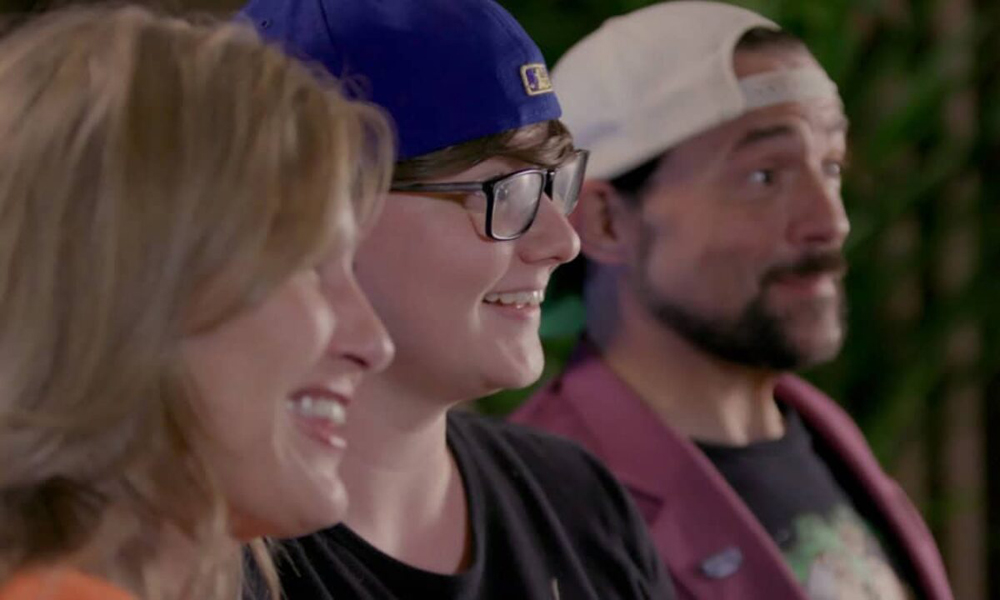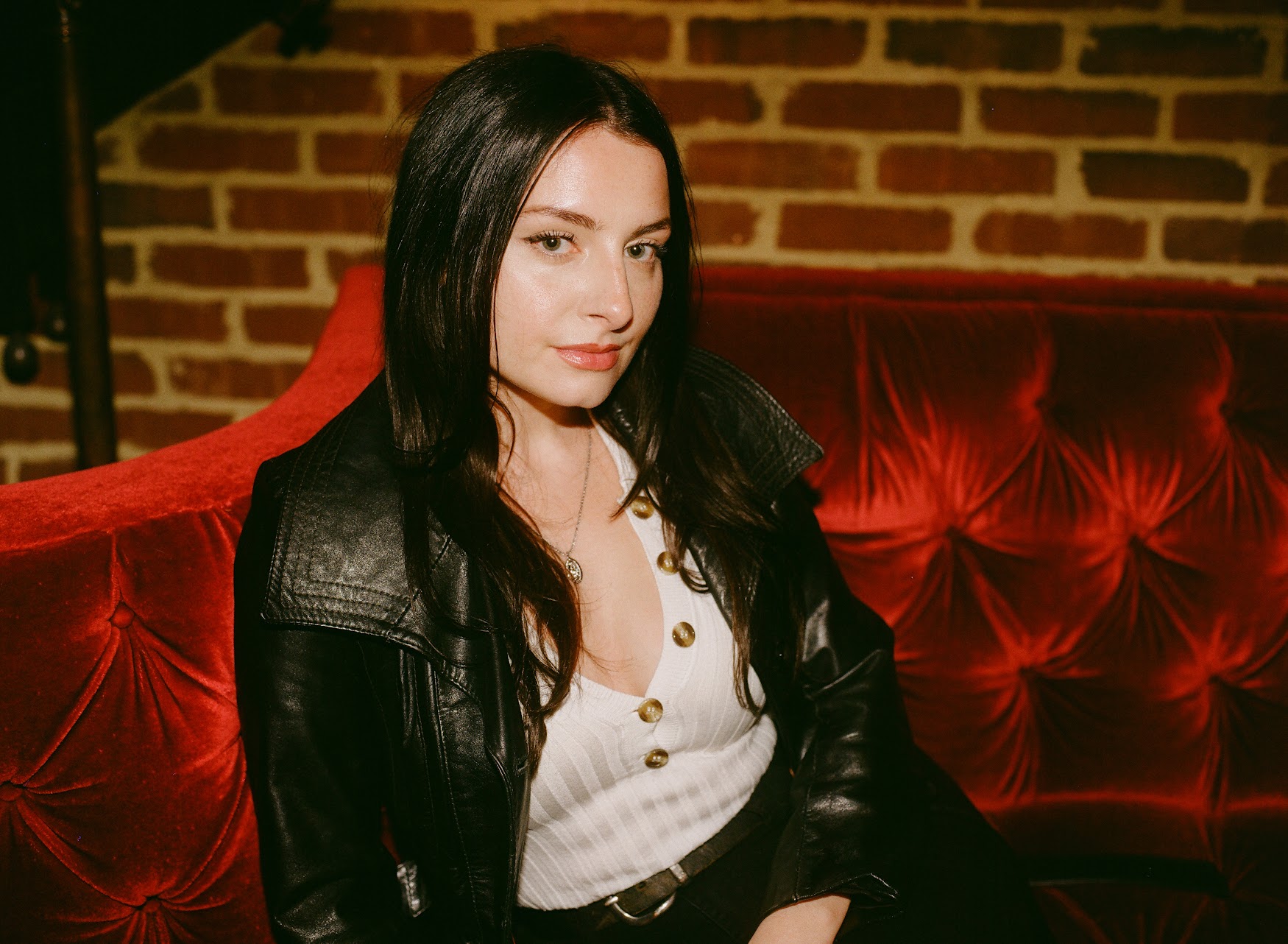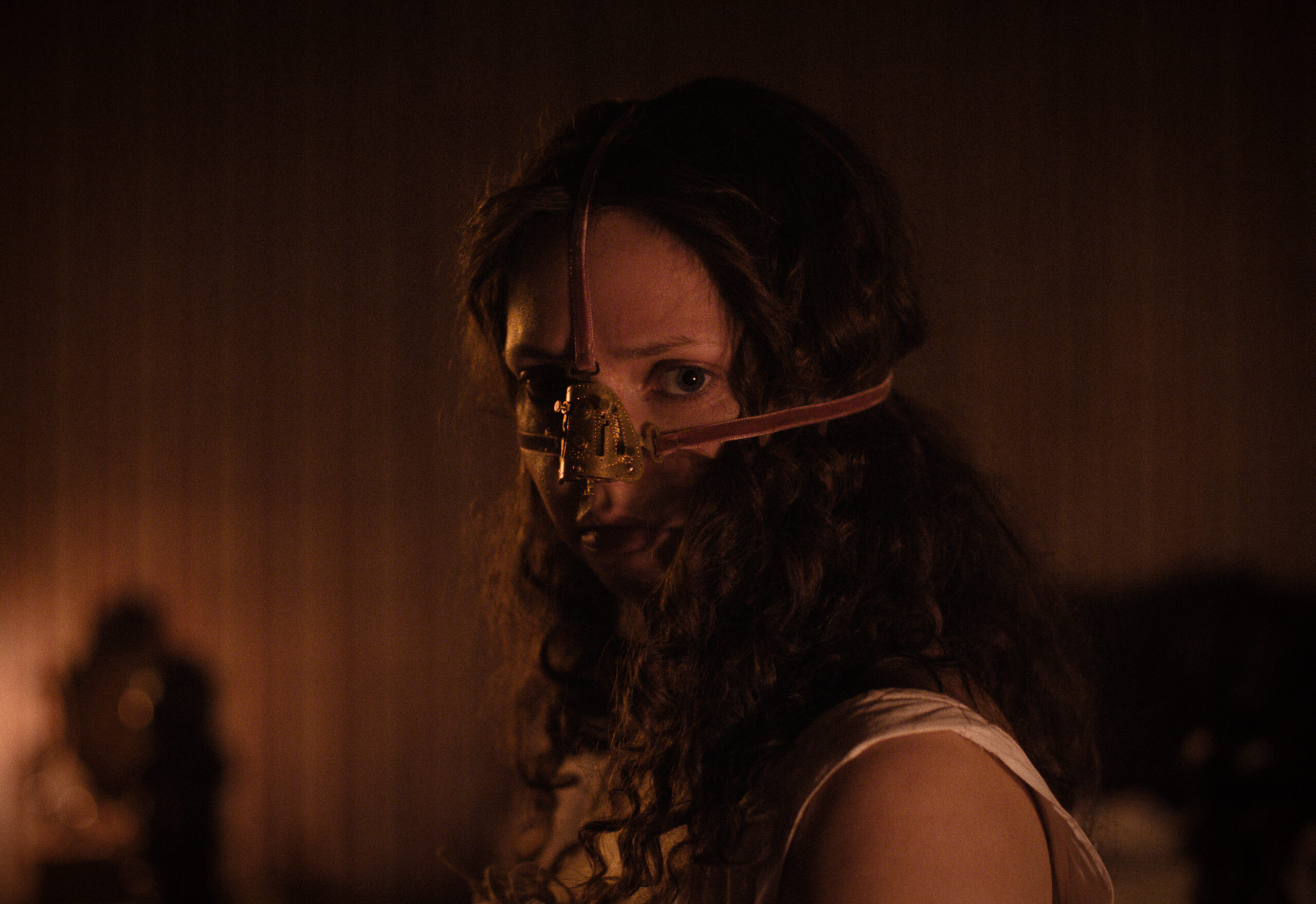Filmmaker Sav Rodgers has a story to tell us about Chasing Amy. As a tween, he once watched the film every day for a month straight. When he was targeted by kids in his school for his perceived queerness, he clung to Chasing Amy even harder. Now grown, Rodgers’ new documentary, Chasing Chasing Amy, is his asterisked and double-sided love letter to his first queer cinematic love. Chasing Chasing Amy is partially a fanboy’s ode to his first brush with queer art, and partially a critique of the complexities inherent to a 1997 lesbian film written and directed by Kevin Smith.

And to be fair, the potential critiques can come easily if you’re not as endeared by Chasing Amy as Sav Rodgers is. Chasing Amy is, as described glibly in an archival media blurb included in Chasing Chasing Amy, a love story where “boy meets lesbian”. Semi-popular cartoonist Holden (Ben Affleck) becomes smitten with indie-cartoonist lesbian Alyssa (Joey Lauren Adams). And against all odds, she falls in love with him, too. One could argue there’s much to be said on whose stories can be told by who, and the thin but loaded lines between bisexuality and lesbianism and how we interpret them both socially. None of these paths particularly interest me, especially not in regards to Chasing Amy.
Because I also have a story about Chasing Amy. In high school, I liked to daydream about being Ben Affleck’s disturbingly young trophy wife in his big Hollywood mansion. I liked him in Gone Girl and Good Will Hunting. I found him angular and brooding. But even with all of my adolescent Affleck watching, I didn’t discover Chasing Amy until after college. My first viewing coincided with an era in which I was no longer identifying as a bisexual woman. Actually, at that time, I wasn’t really identifying as anything at all; I thought, maybe, that I had transcended all labels – that I was so queerly liberated, so sexually insouciant, that there was no need for any words to describe my existence.
Chasing Amy’s Alyssa (Joey Lauren Adams) seemed to be doing exactly what I was—she was an out-and-proud lesbian with the self-actualized ease to date a man when she felt like it (my very own Ben Affleck, no less!) . “I feel justified lying in your arms,” Alyssa famously says to Holden’s Affleck, “because I got here on my own terms, and I have no question there was some place I didn’t look.” A few years after Alyssa became one of my queer cultural touchstones, particularly in regards to the mostly unbothered question mark that was my sexuality, I realized I was not the most sexually fluid girl to ever exist. I was, in fact, just a femmed-out dyke raised in a heterosexual world.
The least interesting and most frustrating portions of Chasing Chasing Amy, at least to me, are the moments where the critics and artists that Rodgers invites to critique Chasing Amy attempt to place the film upon some imagined spectrum or grading system in regards to its queerness. “If queer cinema were a bus,” critic Teo Bugbee says at one point, “Chasing Amy would be outside of the bus.” Maybe outside of Teo’s bus. But Chasing Amy is seated comfortably within mine, and within Sav’s, and within lots of queer peers of mine. You don’t have to resonate or even like every form of gay, queer, or trans experience or expression. But I do think everyone belongs, ultimately, on the bus.

Another critic describes Alyssa as coming in “a very appetizing-to-the-male-gaze package—she’s blonde, she’s thin, she’s sexually available, she has a promiscuous past.”
To which I say, if there isn’t a place for blonde lesbians with a temporary penchant for Ben Affleck, then there is no place for me. It takes all kinds. To suggest that Chasing Amy is faultless is silly (what film about queerness is faultless to everyone?), but to decide what and who is implausible, wrong, or “out of the bus” when it comes to queerness and queer art is a useless task.
I found the best parts of Chasing Chasing Amy to be the ones centered on Sav’s personal experience with the original film. I love watching his pilgrimage to the spots where Chasing Amy was shot, watching him observe with a quiet, gay reverence. Rodger’s increasing personal connection with Kevin Smith and Joey Lauren Adams throughout the shooting of the documentary feels like something out of a fanboy fairy tale; meeting your heroes is one thing, having them affirm your gender transition while speaking candidly about the complexities of your favorite film for months on end is, I can only imagine, unfathomably heady. But these Amy connections are frankly secondary as Rodgers is also carefully documenting his engagement and marriage to his long-term partner Riley; a life chapter that is a grounding and essential centerpiece to Chasing Chasing Amy. As his relationship with Chasing Amy changes and even occasionally sours, Riley is a steadfast source of support to Sav. In Chasing Amy, Sav saw a model for community and self-actualization; Riley, quite movingly, is proof that he found it.

Chasing Chasing Amy is most moving when it’s about making sense of the stories that allowed us to make sense of ourselves. At one point, Sav reflectively notes, “I don’t need Chasing Amy the way that I used to […] It was a life raft when I needed it. Now, I have new dreams.” Sav and I maybe wouldn’t have been able to begin dreaming of the lives we have — queer ones filled with love, desire, and community that feels justified to ourselves — without Chasing Amy.
Chasing Amy is not going to necessarily be the movie that you have a story about. But Chasing Chasing Amy captures a cinematic experience you’ve likely experienced if you’ve ever felt different or alienated at all. There was the first movie that told you a story about what you could become if you followed a path of authenticity, and if you were brave enough to make the life you wanted when the time came. For even one lonely little trans kid in Kansas, or one untethered little twenty-something dyke to find sacred ideas in Chasing Amy makes it matter.



